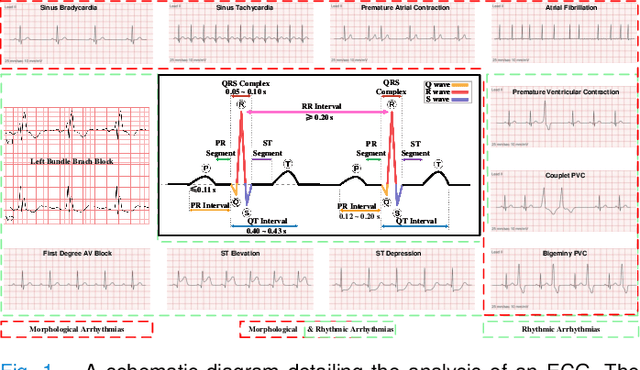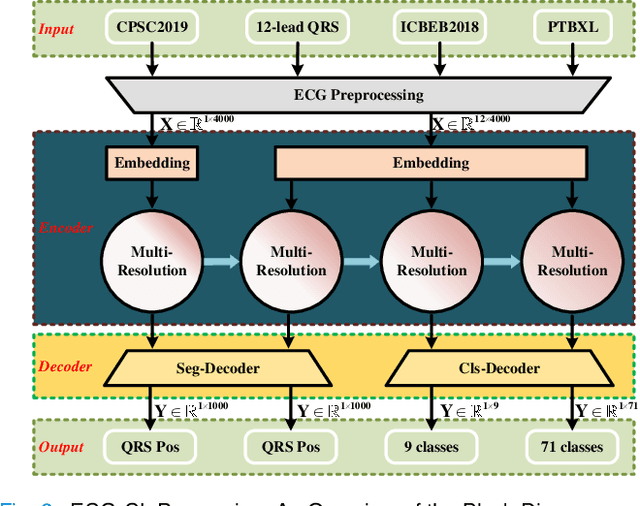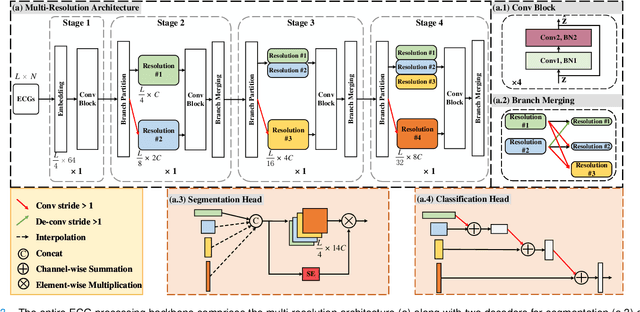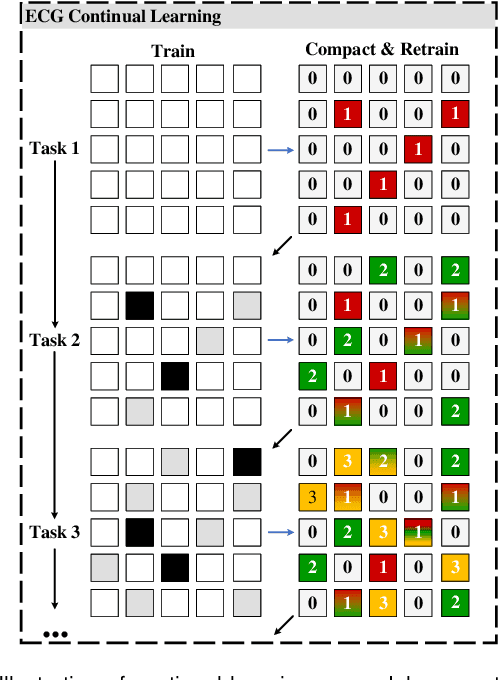ECG-CL: A Comprehensive Electrocardiogram Interpretation Method Based on Continual Learning
Paper and Code
Apr 10, 2023



Electrocardiogram (ECG) monitoring is one of the most powerful technique of cardiovascular disease (CVD) early identification, and the introduction of intelligent wearable ECG devices has enabled daily monitoring. However, due to the need for professional expertise in the ECGs interpretation, general public access has once again been restricted, prompting the need for the development of advanced diagnostic algorithms. Classic rule-based algorithms are now completely outperformed by deep learning based methods. But the advancement of smart diagnostic algorithms is hampered by issues like small dataset, inconsistent data labeling, inefficient use of local and global ECG information, memory and inference time consuming deployment of multiple models, and lack of information transfer between tasks. We propose a multi-resolution model that can sustain high-resolution low-level semantic information throughout, with the help of the development of low-resolution high-level semantic information, by capitalizing on both local morphological information and global rhythm information. From the perspective of effective data leverage and inter-task knowledge transfer, we develop a parameter isolation based ECG continual learning (ECG-CL) approach. We evaluated our model's performance on four open-access datasets by designing segmentation-to-classification for cross-domain incremental learning, minority-to-majority class for category incremental learning, and small-to-large sample for task incremental learning. Our approach is shown to successfully extract informative morphological and rhythmic features from ECG segmentation, leading to higher quality classification results. From the perspective of intelligent wearable applications, the possibility of a comprehensive ECG interpretation algorithm based on single-lead ECGs is also confirmed.
 Add to Chrome
Add to Chrome Add to Firefox
Add to Firefox Add to Edge
Add to Edge